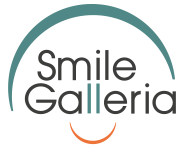Saturday & Evening appointments
Most Insurances Accepted
Kids Welcome

CALL FOR AN APPOINTMENT
703.992.7272
CALL FOR AN APPOINTMENT
703.992.7272
Family & Cosmetic Dentistry at Tysons Corner
ORTHODONTICS
When it comes to straightening your teeth, an improved appearance and a beautiful smile are simply added bonuses. Orthodontics involves moving teeth through bone to relocate them in better places for both appearance and function. There are many benefits to straight teeth other than looking and feeling better that you may not have realized.
Straight teeth can reduce pain when eating.
If your top and bottom teeth are crooked, you may be more prone to discomfort because teeth that are misaligned may bite into the tissue of your mouth and jaw while you are eating. A perfectly aligned bite can reduce pain next time you are enjoying your favorite meal.
Straight teeth can improve your oral hygiene.
Crooked teeth are more difficult to clean because of the way they are positioned inside your mouth, which makes it easier for sticky plaque to build up over time. Plaque is one of the key players in bad breath, and it can also increase your chances of developing cavities.
Straight teeth can reduce your risk of periodontal disease, like gingivitis.
Gums that are swollen, red or bleed easily are infected and typically have plaque that has deposited in the soft oral tissue. Periodontal disease can often be a result of crowded teeth or teeth that are too widely spread. When teeth are properly aligned, it helps the gums fit more securely around the teeth, allowing for the strongest and healthiest defense against potential periodontal problems.
Although you’ll get a better idea of what type of treatment you may require during your first appointment at Smile Galleria, you may benefit from orthodontic treatment if you have:
- An overbite or deep bite
- An underbite
- Impacted teeth
- Protruding front teeth
- Crowded teeth
- Too much space in between each tooth
Of course, these conditions are only examples of why people may need orthodontic treatment. For a more comprehensive and thorough evaluation, make an appointment for a consultation.
TYPES OF BRACES
Metal braces/Traditional braces
Traditional braces also called metal braces are the most common type of braces. Metal braces are not what they used to be. The brackets are smaller, making them less noticeable and new heat activated wires use body heat to help move teeth more quickly and with less pain than braces many adults may remember from their childhood.
Ceramic Braces
Ceramic braces are tooth colored braces that serve as a cosmetic alternative to traditional metal braces. They are the same size and shape as metal braces, but the clear brackets blends in with your teeth making them less noticeable.
INVISALIGN®
Invisalign® consists of a custom-made series of clear plastic aligners. These virtually invisible plastic trays are made to adjust teeth as an alternative to traditional wire braces. They are worn over the teeth and will be replaced every 2 weeks in order to shift the teeth into place gently and gradually.
Invisalign® is a treatment for adults and teens.
Invisalign® effectively corrects a variety of difficult dental problems for men, women and teens. Whether you have crooked or protruding teeth or even more serious dental problems, Invisalign® may have an affordable teeth straightening option for you.
Some of the main conditions Invisalign currently treats are:
Gapped Teeth
Gaps between the teeth may occur when there is abnormal growth of the jawbone or when teeth are missing. The extra space left by missing teeth may cause surrounding teeth to shift creating gaps between teeth.
Overbite
Overbite occurs when the upper teeth bite over the lower teeth. Bad oral habits, over-development of bone or genetics are typically what causes an overbite to happen. An overbite can lead to wear on the lower teeth causing pain in the jaw and joints.
Underbite
An underbite is usually caused by an undergrown upper jaw, overgrown lower jaw, or both. Missing upper teeth have also been known to cause an underbite. Normal function of front teeth or molars can lead to tooth wear and cause pain in the jaw. Ideally treatment for an underbite should begin as a child, while the jaw is still forming and more malleable.
Open Bite
Open bite often occurs when teeth are not able to make contact with their opposing teeth. The cause may have to do with an abnormal jaw structure, but more often it is self imposed with excessive thumb-sucking or tongue thrusting. An open bite can lead to more than cosmetic discomfort. It can also cause pain while chewing, speech impairments or TMJ.
Overly Crowded Teeth
Teeth crowding occurs when there is a lack of room within the jaw or the dental arch is too small to accommodate the all the teeth. Crowded teeth are difficult to brush and floss, which leaves people with severe crowding more susceptible to tooth decay and gum disease. Crowded teeth can get worse over time when left untreated.
Crossbite
Crossbite can occur when there is a misalignment of the dental arches (lower jaw and upper jaw) causing upper teeth to bite on the inside of the lower teeth. It can be one tooth or multiple teeth. Left untreated, crossbites can cause wear of the teeth and even bone loss.
SERVICES
Smile Galleria Family & Cosmetic Dentistry at Tysons Corner is the office of Wilson J. Kim, DDS
1-703-992-7272